
West Virginia, August 2007 - The Mystery of the Underground
Bunker,
Lewisburg, Charleston
Page 3
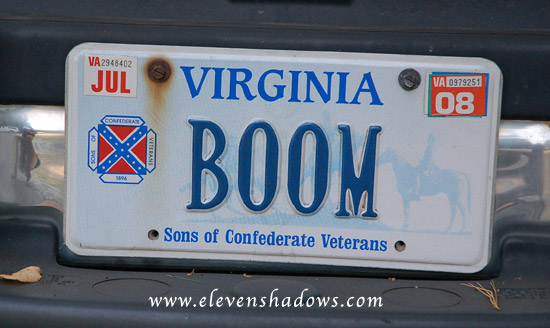 Boom!!!! Boom!!!!
Displaying Confederate pride as only a son of a Confederate veteran can. Good guess is this guy's firin' the cannon, eh? |
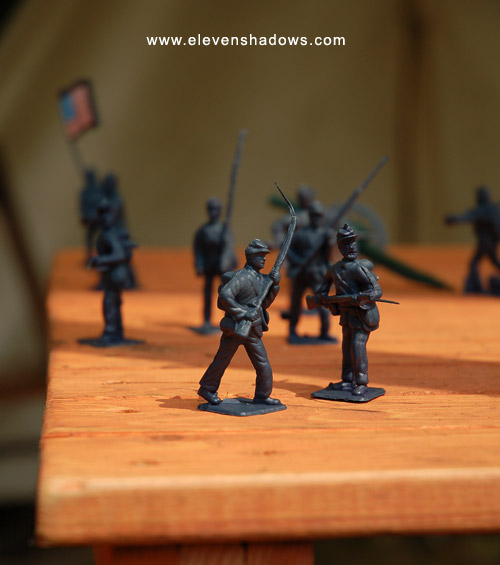 How
young sons of Confederate veterans learn strategy, these toy soldiers rested
on a wooden table in one of the tents. How
young sons of Confederate veterans learn strategy, these toy soldiers rested
on a wooden table in one of the tents. |
 There's
nothing like having tasty food at the historic
General Lewis Inn in Lewisburg after a hot day of witnessing gun
battles. There's
nothing like having tasty food at the historic
General Lewis Inn in Lewisburg after a hot day of witnessing gun
battles.
The Inn is located at the scene of an 1862 Civil War battle. Patrick Henry and Thomas Jefferson registered stayed here as guests when visiting one of the many mineral springs resorts in the area frequented by the antebellum aristocrats of the South. |
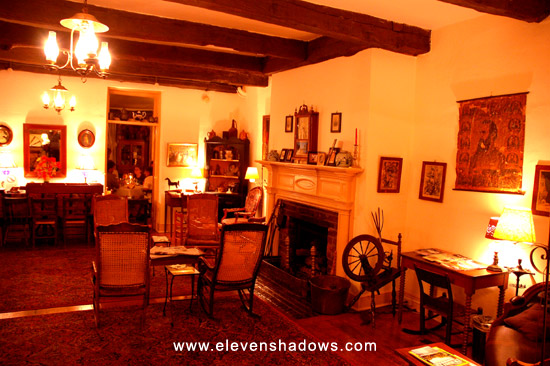 The
interior of the
General Lewis Inn in Lewisburg, West Virginia. The
interior of the
General Lewis Inn in Lewisburg, West Virginia. |
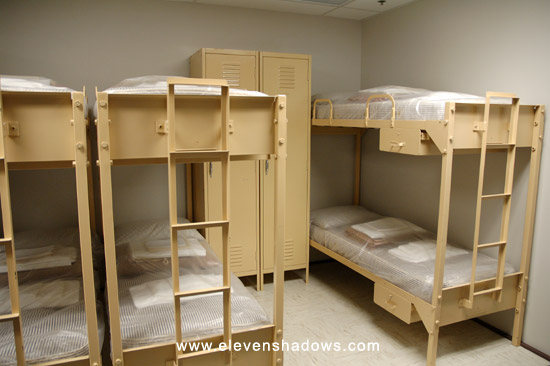 On
Monday morning, we received a special private tour of the mysterious bunker
underneath the
Greenbrier resort, courtesy of Manager of Public Relations
Lynn Swann (who is not the Steelers wide receiver, but we're grateful just the
same). Mary Wade knew her from her job as a journalist. On
Monday morning, we received a special private tour of the mysterious bunker
underneath the
Greenbrier resort, courtesy of Manager of Public Relations
Lynn Swann (who is not the Steelers wide receiver, but we're grateful just the
same). Mary Wade knew her from her job as a journalist.The mysterious Eisenhower-era bunker was designed to safeguard Congress from nuclear attack. Although sequestered below a five-star resort, the bunk beds of the bunker are anything but luxurious. We were not allowed to take photos of most of the rooms on the bunker tour. We saw massive generators and water tanks, detoxification rooms, assembly rooms, and tunnels, all under the Greenbrier. |
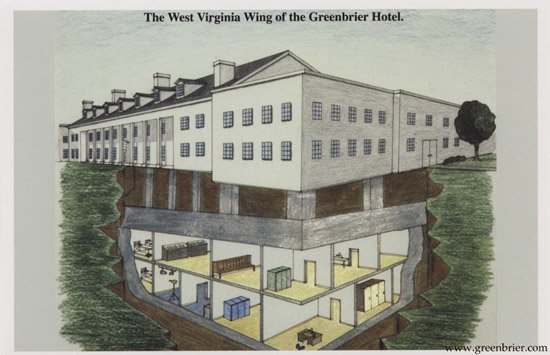 This is a scan of a postcard given to us
on the
Greenbrier
tour, and is a formerly classified artist's rendering of the relationship of
the underground bunker to the West Virginia Wing of the Greenbrier. This is a scan of a postcard given to us
on the
Greenbrier
tour, and is a formerly classified artist's rendering of the relationship of
the underground bunker to the West Virginia Wing of the Greenbrier. |
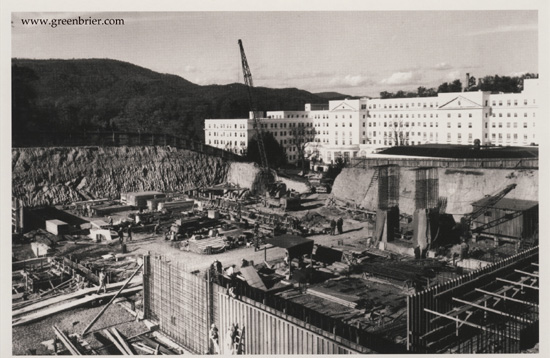 Also
a postcard. It's a formerly classified construction photograph of the bunker
(1960). The section shown was used as the Exhibit Hall of the
Greenbrier. Also
a postcard. It's a formerly classified construction photograph of the bunker
(1960). The section shown was used as the Exhibit Hall of the
Greenbrier.
This part of the bunker was "hidden" out in plain view of the public. Often, the best way to hide something is to have it in the open. |
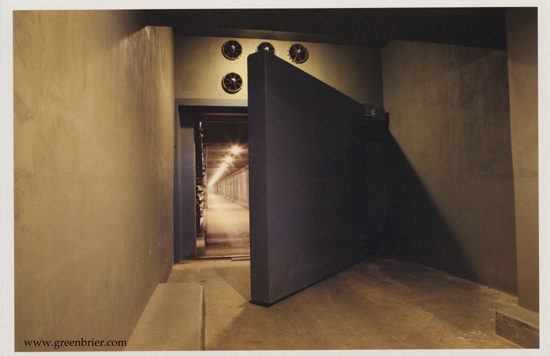 And,
yes, another postcard, showing a 25-ton blast door protecting the west tunnel entrance of the
emergency relocation facility for Congress, located at the Greenbrier in
White Sulphur Springs, West Virginia. And,
yes, another postcard, showing a 25-ton blast door protecting the west tunnel entrance of the
emergency relocation facility for Congress, located at the Greenbrier in
White Sulphur Springs, West Virginia.Although built in the Eisenhower era, the technology and medical supplies were regularly updated by personnel sworn to secrecy, with food and other supplies delivered. As difficult as it is to keep a secret, it's a small miracle that this was kept hush-hush for over thirty years. |
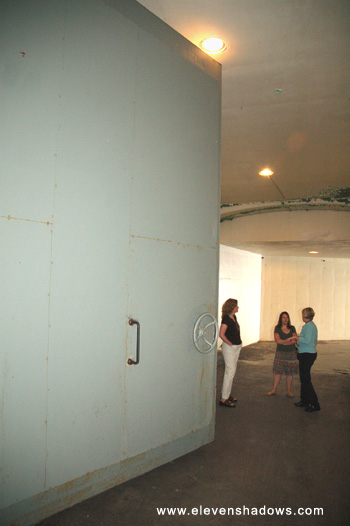 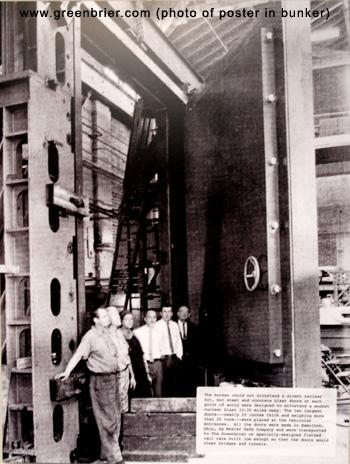 Two
views of the 35-ton steel and concrete blast door, designed to withstand a
"modest nuclear blast" 15-30 miles away. Two
views of the 35-ton steel and concrete blast door, designed to withstand a
"modest nuclear blast" 15-30 miles away.
Left Right |
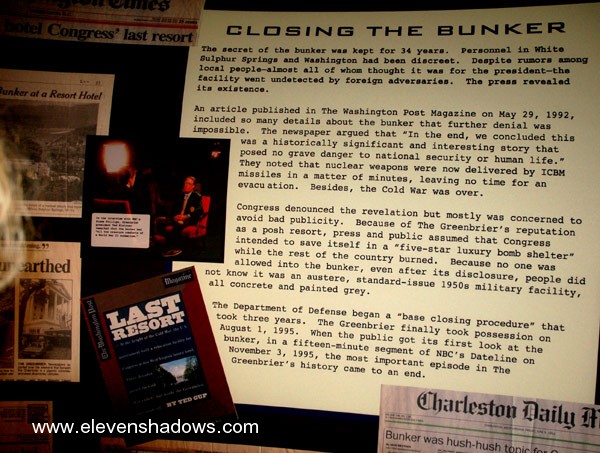 Closing
The Bunker Closing
The BunkerA display at the bunker outlining the Washington Post Magazine article that exposed the secret of the nuclear war bunker in 1992. The newspaper's rationale was that "in the end, we concluded this was a historically significant and interesting story that posed no grave danger to national security or human life," noting that with current nuclear weapons, there would be no time for an evacuation. Who knows how many secret nuclear bunkers still exist? |
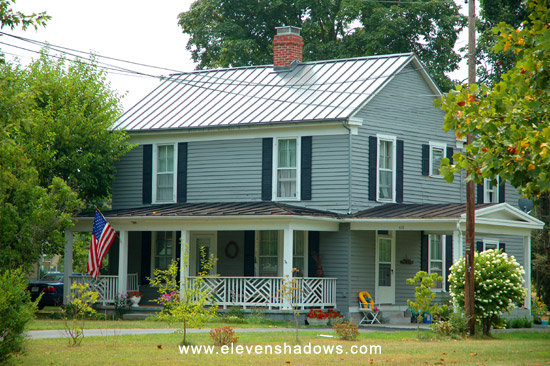 After
the bunker tour at the Greenbrier, we drove to Lewisburg cemetery to visit
the site of Lisa's relative from the 1800s, part of her ongoing geneology research. She has found direct relatives
dating back to the
1600s so far. After
the bunker tour at the Greenbrier, we drove to Lewisburg cemetery to visit
the site of Lisa's relative from the 1800s, part of her ongoing geneology research. She has found direct relatives
dating back to the
1600s so far.
On the way we saw many beautiful homes in charming Lewisburg. |
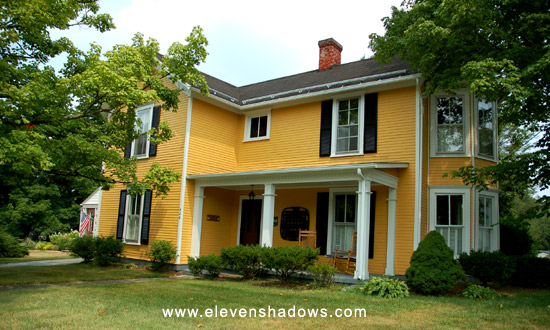 Another
beautiful Lewisburg home. Another
beautiful Lewisburg home. |
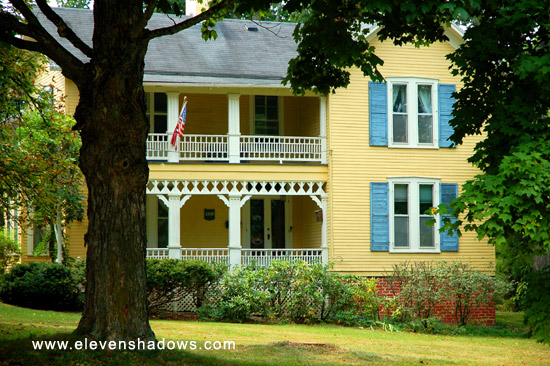 The
front porches are an especially appealing aspect of this historic
architecture here in Lewisburg and elsewhere in West Virginia. The
front porches are an especially appealing aspect of this historic
architecture here in Lewisburg and elsewhere in West Virginia. |
 A
license plate map by Northern Californian artist
Aaron
Foster in a Lewisburg art gallery. A
license plate map by Northern Californian artist
Aaron
Foster in a Lewisburg art gallery. |
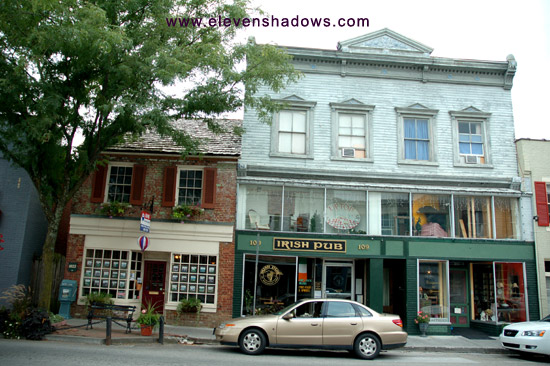 Downtown
Lewisburg, WV, named after Andrew Lewis, who established a camp near a
spring that is now called Lewis Spring. Downtown
Lewisburg, WV, named after Andrew Lewis, who established a camp near a
spring that is now called Lewis Spring.
We ate at a couple of restaurants here and looked at some of the various antique shops before heading back to Charleston.
|
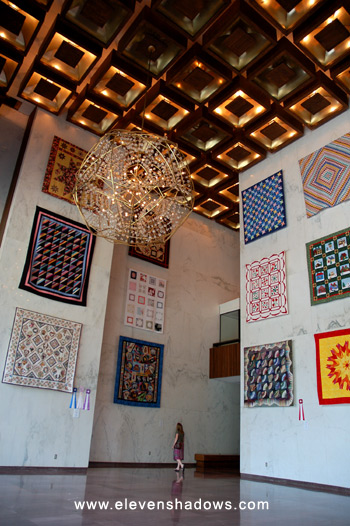 We
returned home to Lisa's parents home in Charleston, saying goodbye to Mary
Wade. I guess some people have to work. She did. She wrote
this very
article for the Times West Virginian. We
returned home to Lisa's parents home in Charleston, saying goodbye to Mary
Wade. I guess some people have to work. She did. She wrote
this very
article for the Times West Virginian.Later that week, Lisa and I went to the Cultural Center in Charleston, the capital of West Virginia. Lisa admiring the 2007 Quilt and Wall Hangings Exhibition, featuring 62 exquisite quilts and wall hangings representing the talents of West Virginia quilters. Quiltmaking is one of West Virginia’s oldest and most treasured art forms. |
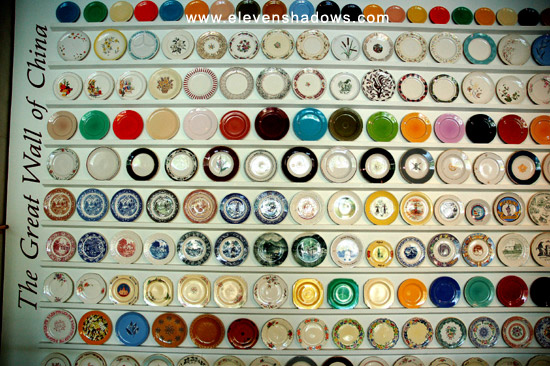 The
Great Wall of China exhibit at the
Cultural
Center in Charleston. The
Great Wall of China exhibit at the
Cultural
Center in Charleston.Mary Wade, journalist, notes that the Cultural Center was built while Arch A. Moore Jr. was governor in the 1970s. And because people thought the boxy building was mausoleum-like, it was dubbed "Archie's Bunker," after the popular '70s TV character from "All in the Family". |
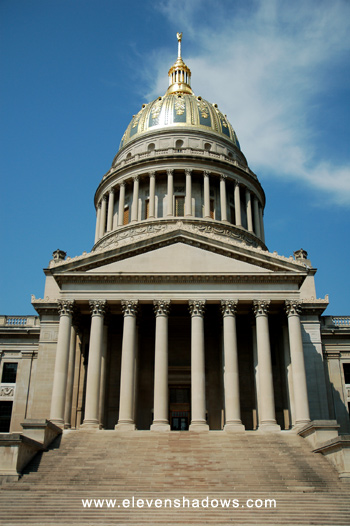 Just
outside the
Cultural
Center in Charleston is the Capitol Building, completed in 1932 (the
1885 capitol building was destroyed in a fire in 1921). Just
outside the
Cultural
Center in Charleston is the Capitol Building, completed in 1932 (the
1885 capitol building was destroyed in a fire in 1921).Cass Gilbert, one of the first celebrity architects in the U.S., designed the Capitol Building. Gilbert's also designed the U.S. Supreme Court Building, the Woolworth Building in St. Louis, and is considered a skyscraper pioneer. |
West Virginia 2007
Page 3
West Virginia
2007 Home Page
Eleven Shadows Travel Page
Contact photographer/musician Ken Lee